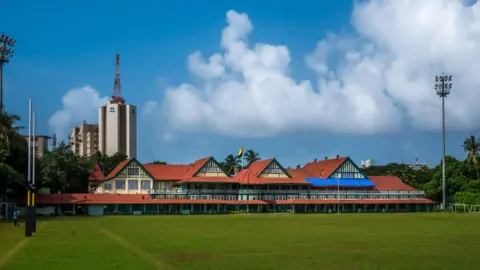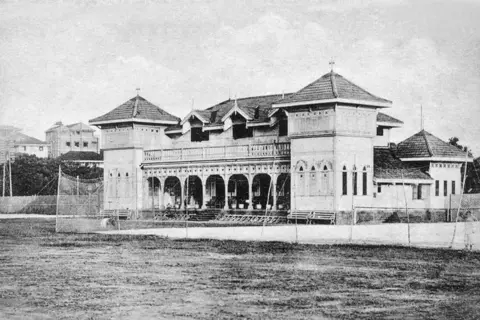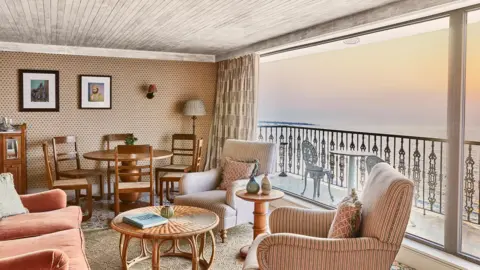JULY 20 – For many years, the Indian elite have sought escape in Raj-era non-public golf equipment and gymkhanas, scattered across the swankiest neighbourhoods within the nation’s huge cities, hillside resorts and cantonment cities.
Access to those quintessentially “English” enclaves, with their bellboys, butlers, darkish mahogany interiors and inflexible gown codes, has been reserved for the privileged; the previous moneyed who roam the corridors of energy – assume enterprise tycoons, senior bureaucrats, erstwhile royals, politicians or officers of the armed forces.
This is the place India’s wealthy and highly effective have hobnobbed for years, constructing social capital over cigars or squash and brokering enterprise offers throughout golf classes. Today, these areas can really feel surprisingly anachronistic – relics of a bygone period in a rustic wanting to shed its colonial previous.
As Asia’s third largest economic system breeds a brand new technology of wealth creators, a extra fashionable and fewer formal avatar of the non-public members-only membership – that displays the sweeping financial and demographic modifications underneath manner in India – is rising. This is the place the newly well-heeled are hanging out and doing enterprise.
 Getty Images
Getty Images Getty Images
Getty ImagesDemand for such areas is robust sufficient for the worldwide chain Soho House to plan two new launches within the capital Delhi and in south Mumbai within the coming months. Their first providing – an ocean-facing membership on Mumbai’s iconic Juhu Beach – opened six years in the past and is wildly profitable.
The chain is one in all a bunch of latest membership entrants vying to cater to a market that’s booming in India.
Soho House began in London within the mid-90s as an antidote to the upscale gents’s golf equipment that lined Pall Mall. It got here in as a refreshingly new idea: a extra relaxed membership for creators, thinkers and inventive entrepreneurs, who may need felt like they didn’t belong within the enclaves of the previous aristocracy.
Thirty years later, India’s flourishing tech-driven economic system of start-ups and creators has birthed a nouveau riche that’s afforded Soho House precisely one other such market alternative.
“There’s progress in India’s younger wealth, and younger entrepreneurs really want a basis to platform themselves,” Kelly Wardingham, Soho House’s Asia regional director, instructed the BBC. The “new rich require various things” from what the standard gymkhanas provide.
Unlike the previous golf equipment, Soho House doesn’t both “shut off” or let in folks based mostly on their household legacy, standing, wealth or gender, she says. Members use the house as a haven to flee the bustle of Mumbai, with its rooftop pool, gymnasium and personal screening rooms in addition to a plethora of connoisseur meals choices. But additionally they use it to drive worth from a various group of potential mentors and buyers, or to be taught new abilities and attend occasions and seminars.
Reema Maya, a younger filmmaker, says her membership of the home in Mumbai – a metropolis “the place one is all the time jostling for house and a quiet nook in a cramped cafe” – has given her uncommon entry to the movers and shakers of Mumbai’s movie business – which could in any other case have been unattainable for somebody like her “with out generational privilege”.
In reality, for years, conventional gymkhanas have been closed off for the artistic group. The well-known Bollywood actor, the late Feroz Khan, as soon as requested a gymkhana membership in Mumbai for membership, solely to be politely refused, as they didn’t admit actors.
Khan, bowled over by their snootiness, is claimed to have quipped, “If you’d watched my films, you’d know I’m not a lot of an actor.”
By distinction, Soho House proudly flaunts Bollywood star Ali Fazal, a member, on its in-house journal cowl.
 Soho House
Soho HouseBut past only a extra fashionable, democratic ethos, excessive demand for these golf equipment can also be an element of the restricted provide of the standard gymkhanas, that are nonetheless very wanted.
Waiting queues at most of them can lengthen “as much as a few years,” and provide hasn’t caught as much as serve the nation’s “new crop of self-made businessmen, artistic geniuses and high-flying company honchos”, based on Ankit Kansal of Axon Developers, which lately launched a report on the rise of latest members-only golf equipment.
This mismatch has led to greater than two dozen new membership entrants – together with impartial ones like Quorum and BVLD, in addition to these backed by world hospitality manufacturers like St Regis and Four Seasons – opening in India. At least half a dozen extra are on their manner within the subsequent few years, based on Axon Developers.
This market, the report says, is rising at practically 10% yearly, with Covid having turn out to be an enormous turning level, as the rich selected to keep away from public areas.
While these areas mark important shifts, with their progressive membership insurance policies and patronage of the humanities, literary and impartial music scene they’re very a lot nonetheless “sanctums of contemporary luxurious”, says Axon, with admission given out by invite solely or by way of referrals, and costing a number of occasions greater than the month-to-month earnings of most Indians.
At Soho House as an illustration, annual membership is 320,000 Indian rupees ($3,700; $2,775) – past what most individuals can afford.
What’s modified is that membership is predicated on private accomplishment and future potential slightly than household pedigree. A brand new self-made elite has changed the previous inheritors – however entry stays largely out of attain for the common middle-class Indian.
 AFP by way of Getty Images
AFP by way of Getty ImagesIn a manner the rising take-up for these memberships displays India’s broader post-liberalisation progress story – when the nation opened as much as the world and discarded its socialist moorings.
Growth galloped, however the wealthy grew to become the most important beneficiaries, rising even richer as inequality reached gaping proportions. It’s why the nation’s luxurious market has boomed, even because the excessive road struggles with tepid demand, with most Indians with out cash to spend on something beyond the basics.
But rising numbers of newly-minted wealthy current an enormous enterprise alternative.
India’s 797,000 high-net price people are set to double in quantity inside a few years – a fraction of a inhabitants of 1.4 billion, however sufficient to drive future progress for these constructing new playgrounds for the rich to unwind, community and reside the excessive life.
By BBC





